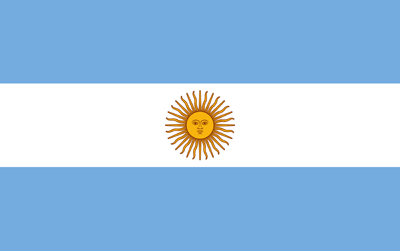Pakistan Local Cotton Market:
(The cotton market remains unstable due to fluctuating prices, shifting import preferences, and ongoing trade tensions. The US-China tariff war continues to impact global trade while a stronger US dollar has made cotton imports more expensive. Pakistan’s textile industry faces challenges as local cotton struggles against tax burdens and competition from duty-free imports)
1- In the local cotton market, cotton prices showed a mixed trend. Textile spinners are increasingly interested in imported cotton because it is both cheaper and of better quality. A key reason for this shift is the availability of EFS facilities. In contrast, locally produced cotton faces an 18% sales tax and does not match the quality of imported varieties.
2- Over the past week, cotton prices in the local market showed mixed trends to firm. Prices were based on its quality and payment terms.
3- The EU’s GSP+ review is set for mid-2025, with potential new regulations before 2027; any negative outcome could severely impact Pakistan’s textile sector, which is heavily reliant on duty-free cotton and yarn imports.
4- Pakistan’s cotton and yarn imports reached a record $1.91 billion in H1 FY25, up $610 million from last year, straining forex reserves, while industry fears trade restrictions could worsen reliance on costly imports.
5- ICE cotton futures couldn’t sustain and reduce over the week as trade war concerns with US negotiations with Mexico and Canada failed to maintain market stability. Buyers were cautious amid concerns of trade tensions. A stronger US dollar also made cotton purchases more expensive, which hurt demand for the natural fiber.
6- While the US paused tariff plans for Mexico and Canada, it imposed a 10% duty on Chinese imports, prompting China to retaliate with tariffs on US coal, LNG, crude oil, and vehicles, effective February 10, 2025.
7- China blacklisted PVH Corp. and Illumina Inc., introduced export controls on tungsten-related materials, and criticized US tariffs as WTO violations, escalating trade tensions between the two economic giants.
8- The USDA Weekly Export Report showed a strong performance, with weekly shipments reaching the highest level of the season. Net sales for the week ending January 30 were 210,100 bales, including 204,200 upland bales and 5,900 Pima bales. Net sales were lower than the previous week and the average of the past four weeks.
9- Last week, cotton prices in Punjab and Sindh were firm and traded in the range of 17,500 to Rs 19,000 per maund (USC 77~ 83 lbs). In Sindh, cotton rate was Rs 17,500 to Rs 18,800 per maund, while in Punjab it ranged from Rs 17,600 to Rs 19,000 per maund based on quality. KCA was the same at 18,000 Rs per maund; PSF dropped Rs. 3 to Rs. 351 PKR/kg.
Local Yarn Market:
(This week, the local yarn market exhibited slow activity with limited business and stable prices. Increased yarn imports exerted downward pressure on the market. Suppliers are facing challenges due to low customer bids and rising input costs. Despite a recent decline in PSF prices, the overall market outlook remains cautious due to subdued demand and persistent cash flow constraints)
1- The local yarn market remained stable with slow activity this week & deliberate business. Increased yarn imports exerted pressure on the domestic market.
2- Suppliers are demonstrating resistance to low bids from customers to protect profitability.
3- The prices of PSF were decreased by IFL Rs. 3/kg on February 3rd in the domestic market and are expected to remain soft by next week.
4- The Faisalabad yarn market continued much slower with less demand. Cash flow constraints persisted.
| Count | Price in Pak Rupees / 10 LBS | Price US$/Bale |
| 16/1 Carded Weaving | 3225 – 3300 | 465 – 475 |
| 20/1 Carded Weaving | 3300 – 3400 | 475 – 490 |
| 30/1 Carded Weaving | 3650 – 3770 | 525 – 545 |
| 20/1 Combed Weaving | 3800 – 3900 | 545 – 560 |
| 30/1 PC Carded Weaving 52:48 | 3050 – 3200 | 440 – 460 |
| 40/1 Combed Compact Weaving | 4360 – 4450 | 630 – 640 |
| 60/1 Combed Compact Weaving | 5800 – 6100 | 835 – 880 |
| 80/1 Combed Compact Weaving | 7900 – 8100 | 1140 – 1165 |
| 40/1 CVC Carded Weaving 60:40 | 3700 – 3900 | 535 – 560 |
Export Yarn Market:
(The export yarn market remained under improved business activity after customers from different regions are back from holidays. There has been decent activity and orders were confirmed. We might see more business confirmation in days to come as good numbers of enquiries are under discussions)
1- The export yarn market showed firm and stable sentiment with handsome business materializations.
2- Customer floated good numbers of inquiries after coming back from holidays against which orders were closed as well.
3- Yarn prices are floating more or less in same range and there is no such fluctuation in prices despite weak cotton sentiment.
4- Cotton prices in Pakistan remained stable as crop is finished. US cotton remained under pressure due to strong US index.
5- Pak rupee against USD is showing stable sentiment, which is another reason for unchanged yarn prices for the export market.
6- Chinese customers showed their interest in buying with selected brands where they have got their desired price level. We might see good pace in business form China in days to come.
7- European customers have floated decent numbers of inquiries against which orders were closed as well.
8- Trade war by USA is causing some inconsistency amongst buyers as things are not clear how this is going to end. However, as of now, there is no major impact on prices.
| Export Yarn Prices | ||||||||||||||||
|
Local Fabric Market:
(Bearish sentiment was witnessed in the local fabric market. A limited number of inquiries were received from the processing units. The target prices were about 4~5% less than the offered prices. Looking ahead, the market is expected to remain under pressure, with slow trading activity likely to persist for both narrow and wider-width fabrics in the near term)
1- The local fabric market continued to face bearish sentiments throughout the week, culminating in sluggish trading activity for both narrow and wider-width fabrics.
2- Demand remained subdued, with local finishers reporting only a limited number of inquiries. Although some orders were secured after tough negotiations, order materialization was constrained, particularly towards the end of the week, for both fabric categories.
3- Buyers maintained a cautious approach, submitting bids that were 4% to 5% below the rates offered by weavers. This pricing gap further contributed to the slow pace of transactions. On the supply side, weavers have already booked their narrow-width looms until mid-to-late March, while wider-width looms are committed until early April 2025, with onward deliveries being offered.
4- Looking ahead, the market is expected to remain under pressure, with slow trading activity likely to persist for both narrow and wider-width fabrics in the near term.
Export Fabric Market:
(Export fabric customers were actively sharing their inquiries, resulting in limited business during the week from Far Eastern, EU, and USA. The price remained stable and was expected to further improve business)
1- The export fabric market business activity started actively towards end of the week after the New Year holidays in Far Easter markets.
2- Customers have exchanged a limited number of inquiries, resulting in limited business during the week.
3- The asking prices are stable due to stable yarn prices.
4- Suppliers are booked till mid-March and offering end-March onward deliveries.
5- European and USA buyers were actively sharing their inquiries during the week and some booking was also witnessed both in narrow and wider width fabric
6- The wider width suppliers are maintaining their prices due to stable raw material prices.
7- The supplies are booked till end mid-April and offering end-April onward deliveries mainly.
| Local and Export Fabric Prices
| ||||||||||||
|
Bed Linen and Towel:
(Amid a reasonable flow of inquiries and demands from Europe, Pakistan’s home textile industry faces cost pressures and slow order confirmations, but having said this, the good demand from Europe may offer relief. To stay competitive, exporters must focus on efficiency, sustainability, and securing long-term contracts. Energy costs and government action on cost reduction are crucial for survival)
1- The Pakistani home textile industry remains under pressure due to high energy costs, inflation, and rising raw material expenses. While the sector continues to be a key supplier to global markets, including Europe and the US, many manufacturers are struggling with reduced profit margins.
2- Exporters are also facing a slowdown in confirmed orders, with a 15-20% price gap between target prices and supplier offerings. Despite these challenges, there is optimism that demand from Europe will lead to an increase in inquiries. The government’s support programs, such as subsidized financing for modernization, are providing some relief, but competition from India and China remains strong.
3- On the domestic front, the local market demand for home textiles is stable but lacks significant growth due to economic constraints. Many factories are operating at reduced capacity, with overall production utilization hovering around 60%.
4- The industry is also seeing increased interest in sustainable and value-added textiles, particularly organic cotton and recycled fabric options. However, fluctuating exchange rates and inconsistent energy supply continue to disrupt production planning. As businesses enter February, exporters are focused on securing long-term contracts to stabilize cash flow, while buyers remain cautious in placing large-volume orders.
Garments:
(Overall, clothing factories are running between sixty and seventy percent of their capacity for production and are attempting to fill the void by taking on more orders. A positive indication for future purchases is that certain Brands are also working on FW25 advancements)
1- The Pakistani apparel industry isn’t able to run at its maximum potential because they do not think that brands would have a significant demand.
2- Most of the export clients do not place substantial orders, such as those for the entire season.
3- The bulk of garment manufacturers are running at sixty to seventy percent of their capacity, and they are actively seeking further orders to refill the capacity that is not being utilized.
4- Orders are placed in segments, only considering urgent requests. A few European and American businesses are working on their FW25 offerings. Factories may usually start taking orders and are offering mid-May deliveries. However, this will depend on the kinds of apparel and accessories required.
Crude Oil:
1- Crude oil prices opened at USD 73.16 with a higher level as compared to last week’s closing figures. In this week, crude oil prices showed a downward trend and closed on the lower side by the end of the week.
2- On the last day of the week, crude oil price closed at USD 71.00 with a decrease of 2.16 USD cents as of the opening figure of the week.
| Opening of Week | Closing Of Week | Change | |
| Price | 73.16 | 71.00 | -2.16 |
Exchange Rate:
1- In last week, values of the Pakistani rupee deprecated against the US dollar’s; other major currencies showed a mixed trend in both the interbank and open markets.
2- At the end of the week, the Euro closed on a negative note with a figure of 1.03 and the British Pound also closed on a negative note with a figure of 1.24 against USD.
| Selling | Buying | |
| LC Sight | 277.70 | 277.65 |
| LC 120 Days | 268.58 | 268.53 |
| Open Market | 281.08 | 276.26 |
NewYork Cotton Future:
The New York Cotton Futures (NYCF) opened the week lower than the previous week’s close, showing a downward trend throughout and closed on lower note at the end of the week.
1- March 2025 Ended at 65.63, down by 41 points compared to the previous week.
2- May 2025 Finished at 66.82, reflecting a decrease of 29 points from the previous week.
3- July 2025 Closed at 67.96, drop of 26 points from the previous week.
4- October 2025 Closed at 68.70, marking a rise of 2 points from the previous week.
Liver Pool Indices:
1- Liverpool Index A was opened at 77.30 on a lower level from the previous week’s closing figure.
2- In this week, Index “A” showed a mixed trend and closed on the lower side by the end of the week.
3- On the last day of the week, LPI “A” closed at 77.20 with a decrease of 10 points.
| Opening of the Week | Closing of the Week | Change | |
| Index A | 77.30 | 77.20 | -0.10 |







